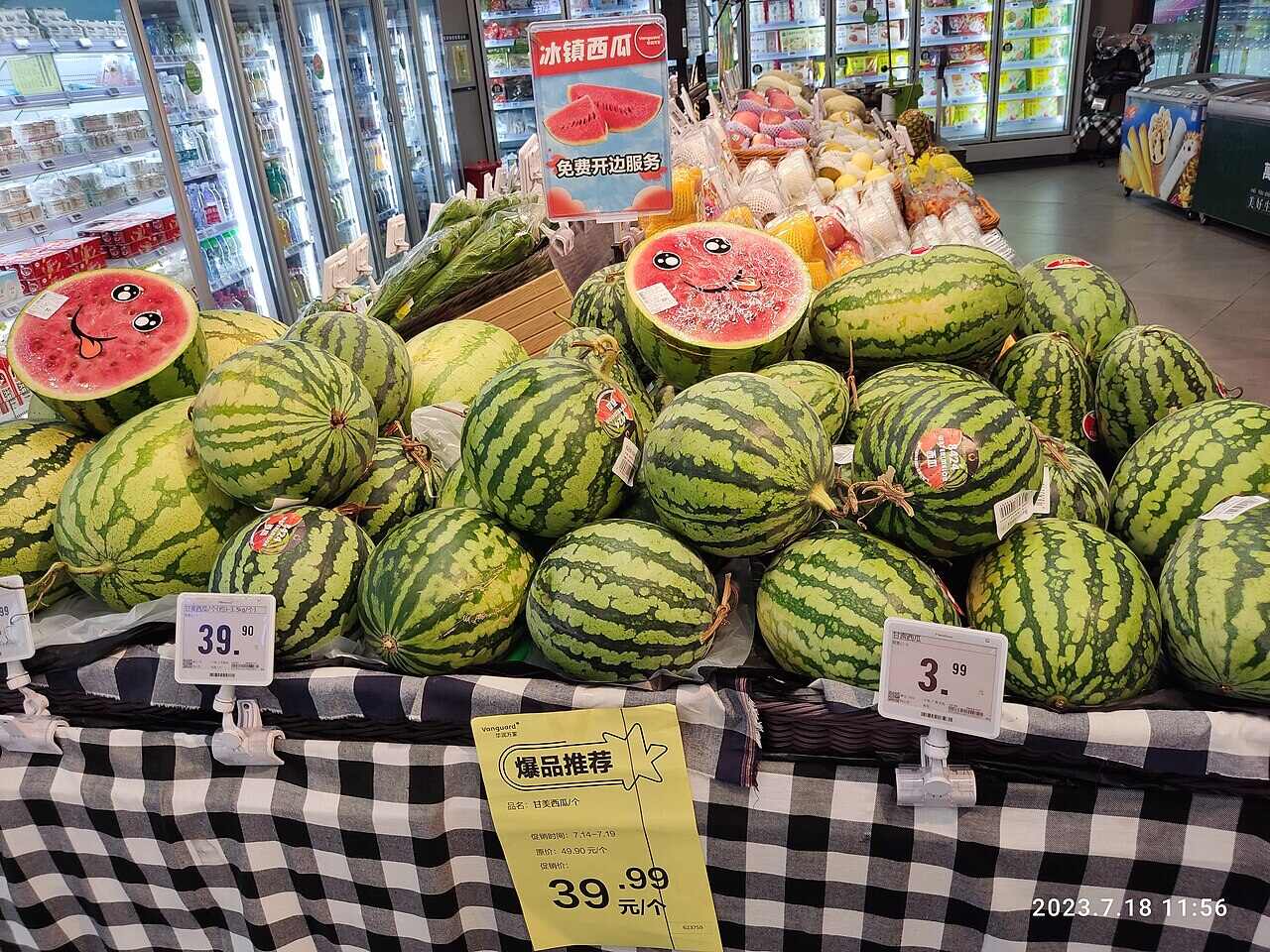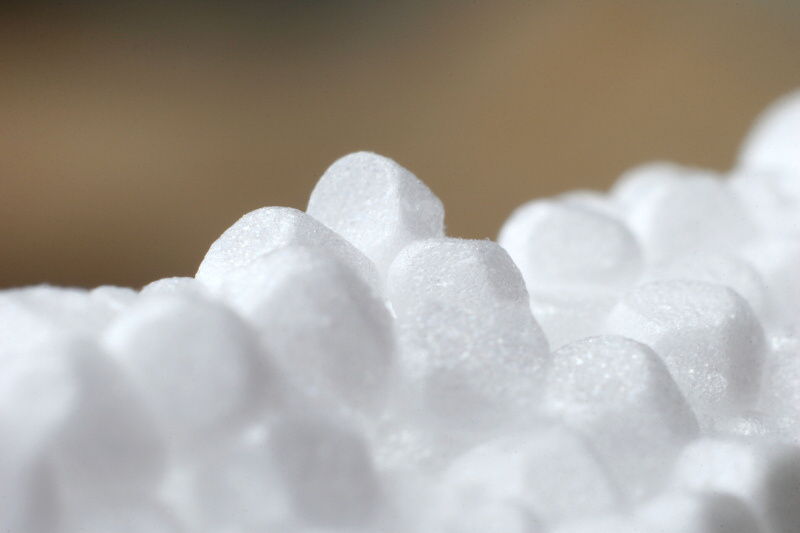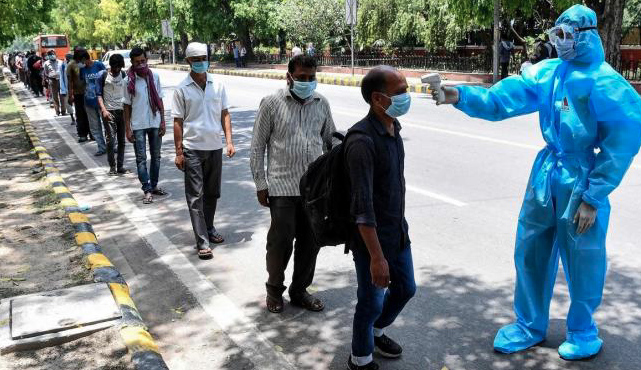Recently, the topic “Chinese People Eat 70% of the World’s Watermelons” became a trending topic on Weibo. Is there any fact to this viral topic? According to reports from multiple domestic media outlets, with summer approaching, people crave a bite of watermelon during the sweltering midday heat, making the afternoon delightful. Some netizens commented that watermelons are naturally made for summer. Data shows that Chinese people consume around 70 million tons of watermelons, accounting for 84.5% of the total production from 26 major watermelon-producing countries worldwide. Not only do they consume domestically produced watermelons, but they also eat those produced abroad.
Experts state that watermelons can clear heat and relieve summer heat, alleviate thirst, and contain a large amount of water. Eating a sweet, juicy piece of watermelon can immediately improve symptoms like thirst, excessive sweating, and irritability. Watermelon also contains substances that can lower blood pressure. After eating watermelon, urine output significantly increases, which can reduce bilirubin levels and help relieve constipation, thus aiding in the treatment of jaundice. Additionally, fresh watermelon juice and tender watermelon rind can increase skin elasticity, making one look younger, reducing wrinkles, and adding a glow. However, it should be noted that people with renal insufficiency should avoid eating too much watermelon, as it can worsen edema and increase blood volume. Patients in the early stages of a cold are not suitable for eating watermelon. Medical opinion suggests that watermelon has the effect of clearing internal heat, which can exacerbate cold symptoms or prolong the illness in its early stages.
In recent years, both the production and consumption scale of watermelons in China have decreased. From 2013 to 2022, China’s watermelon production has shown a fluctuating downward trend, decreasing by 986,900 tons, a reduction of approximately 1.54%. The planting area for watermelons also decreased by 2.3516 million mu (Chinese acres), a decline of about 9.55%, which is the main factor contributing to the overall decrease in national watermelon production. From 2015 to 2022, the total volume of China’s watermelon import and export trade decreased by 107,500 tons, a drop of about 46%, while the total trade value increased by USD 7.6729 million, a rise of about 12.18%. The apparent consumption of watermelons in China decreased by 3.1283 million tons, a decline of about 4.73%.
In 2022, watermelon production in China was mainly concentrated in Henan, Shandong, Jiangsu, Hunan, and Anhui provinces. Henan Province had a watermelon planting area of 3.4815 million mu and a production of 12.9232 million tons, accounting for 15.63% and 20.51% of the national watermelon planting area and production, respectively, leading the rankings significantly. With the development of facility cultivation technology, watermelon production in China has gradually decentralized. The share of key production areas in the national watermelon production has decreased, and with the continuous expansion of watermelon production in Southwest and South China, the national watermelon production center has gradually shifted southward.
As of now, China has 63 geographically indicated agricultural products for watermelons, mainly distributed in Shandong, Henan, and Jiangsu provinces. There are 116 certified organic watermelon organizations, primarily located in Beijing, Anhui, and Jiangxi provinces. Nationally, there are 92 certified special and new watermelon products, mainly distributed in Henan, Shandong, and Inner Mongolia. These developments support the goal of stabilizing the national watermelon planting area at around 23 million mu and production at around 63 million tons by 2025, with 80% of the area dedicated to high-quality watermelons and over 50% to branded marketing, ensuring year-round supply.
Watermelons are refreshing, thirst-quenching, sweet, and juicy, making them a staple in Chinese post-meal fruit platters, with steady consumption year-round. On a hot summer day, nothing is more enjoyable than a piece of chilled watermelon. Thanks to the hard work and selfless dedication of agricultural researchers like Academician Wu Mingzhu, China’s watermelon industry has flourished, allowing people nationwide to enjoy large, thin-skinned, sweet, and crispy watermelons. In recent years, domestic watermelons have been increasingly exported to neighboring countries and regions, spreading this delicious and refreshing fruit worldwide.
This article, based on data accumulated by the Cloud Fruit Industry Brain during its operation, provides a reference for enterprises and units engaged in scientific research, breeding, planting, processing, storage, packaging, preservation, transportation, and sales in the watermelon industry. The data includes planting area, production, and import and export statistics of China’s watermelon industry. Note that there may be discrepancies in the production data obtained from FAO and the National Bureau of Statistics due to different statistical criteria.
In recent years, China’s watermelon production has maintained around 63 million tons, showing a long-term fluctuating downward trend. According to the National Bureau of Statistics, from 2013 to 2022, China’s watermelon production fluctuated downwards from 64.01 million tons to 63.0231 million tons, a decrease of 986,900 tons, about 1.54%.
As the main factor leading to the overall decline in national watermelon production, the planting area for watermelons in China in 2022 was 22.2723 million mu, down from 24.6239 million mu in 2013, a reduction of 2.3516 million mu, about 9.55%.
In 2023, China’s total watermelon import and export trade volume was 129,900 tons, with a total trade value of USD 65.6461 million. Among these, imports amounted to 73,600 tons, with an import value of USD 11.3407 million, while exports were 56,300 tons, with an export value of USD 54.3054 million. From 2015 to 2022, China’s total watermelon import and export trade volume decreased by 107,500 tons, a decline of about 46%, while the total trade value increased by USD 7.6729 million, a rise of about 12.18%. From 2018 to 2022, China’s watermelon import volume decreased from 219,900 tons to 68,400 tons, a reduction of 151,500 tons, about 68.9%. Meanwhile, the export volume increased from 46,500 tons to 57,800 tons, a rise of 11,300 tons, about 24.29%. China has consistently maintained a net import stance in watermelon trade. The national net import volume of watermelons decreased from 173,400 tons in 2018 to 10,600 tons in 2022, a reduction of 162,800 tons, about 93.87%.
Similar Posts
From 2015 to 2022, China’s apparent watermelon consumption remained around 63 million tons, closely matching domestic production, showing a generally stable but slightly declining trend. It decreased from 66.162 million tons in 2015 to 63.0337 million tons in 2022, a reduction of 3.1283 million tons, about 4.73%.
In 2022, among the Chinese provinces producing watermelons, 17 provinces had an annual production of over 1 million tons, ranked from highest to lowest: Henan, Shandong, Jiangsu, Hunan, Anhui, Hubei, Guangxi, Gansu, Hebei, Xinjiang, Ningxia, Jiangxi, Zhejiang, Shaanxi, Liaoning, Sichuan, and Jilin. Henan Province had a watermelon production of 12.9232 million tons, accounting for about 20.51% of the national production, leading the rankings significantly. Compared to 2013, in 2022, there was an increase of one province producing over 1 million tons of watermelons nationally, with Sichuan and Jilin newly joining the ranks, while Heilongjiang’s production dropped below 1 million tons.
In 2022, the provinces with watermelon planting areas over 1 million mu were Henan, Shandong, Hunan, Jiangsu, Guangxi, Hubei, Jiangxi, and Anhui, which are suitable for the growth of gourd crops. Henan had a watermelon planting area of 3.4815 million mu, accounting for about 15.63% of the national planting area. Shandong had a planting area of 2.0106 million mu, accounting for about 9.03% of the national planting area. Hunan had a planting area of 1.8384 million mu, accounting for about 8.25% of the national planting area.


















